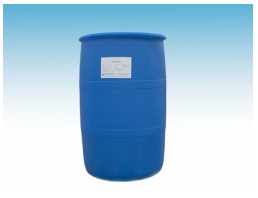Oxygenation principle of surfactant: the saturated solubility of oxygen in aquaculture water can be increased by adding alkyl glycoside surfactant. According to hydrate formation theory and bimembrane theory, due to the low solubility of oxygen in water, water oxygenates in water generally form at the gas-liquid interface first, and then slowly diffuse from the gas phase to the liquid phase. Due to the solubilization of surfactants, a large amount of oxygen is dissolved in the surfactant micelles formed in the aqueous solution, so that the formation of water oxygenate in the surfactant aqueous solution can not only occur at the gas-liquid interface, but also in the water body, reducing the formation time of water oxygenate, and improving the oxygen in the water body Solubility in.

It is composed of mannooligosaccharide and octyl amino acid to modify the negative film and repair the black sludge in the pond, which is particularly effective for eliminating the growth and reproduction sources of harmful bacteria at the pond bottom, especially Vibrio, enhancing the self purification function of the bottom material, repairing the healthy ecological environment of the pond and promoting the micro ecological cycle; from the bottom to the top, first improving the bottom material, Adjust and cool the water quality, clean the original and activate the water body; prevent and eliminate the bottom material fever and bottom material corruption; eliminate the harmful substances such as ammonia nitrogen and hydrogen sulfide.
In the conventional water quality improver, we often use a large number of flocculants, such as aluminum potassium sulfate, aluminum sulfate, polyaluminium chloride (PAC) and polyferric sulfate (PFS), which have the disadvantages of large amount, unstable effect and secondary pollution. At present, polyethylenedimethylammonium chloride, polyammonium, sodium polyacrylate and acrylamide are gradually replacing the traditional water purification agent.
The polymer flocculant widely used in China is mainly the product of polyacrylamide series. Polyacrylamide is a kind of linear water-soluble copolymer. The modified cationic polyacrylamide is a solid powder, easy to dissolve in water, with strong moisture absorption and flocculation. It is a linear polymer surfactant with positive charge, which can make the suspended organic colloids and organic compounds Effective flocculation.
The flocculation mechanism is as follows: multi-point adsorption occurs on the surface of long-chain polymer and solid particles in sewage (generally negative, such as clay); the polymer chain is very long, which can be adsorbed on several solid particles at the same time to bridge them together; the long-chain molecules adsorbing several solid particles can also bridge each other through common adsorption of solid particles or intertwining to form flocculation To agglomerate (or agglomerate).